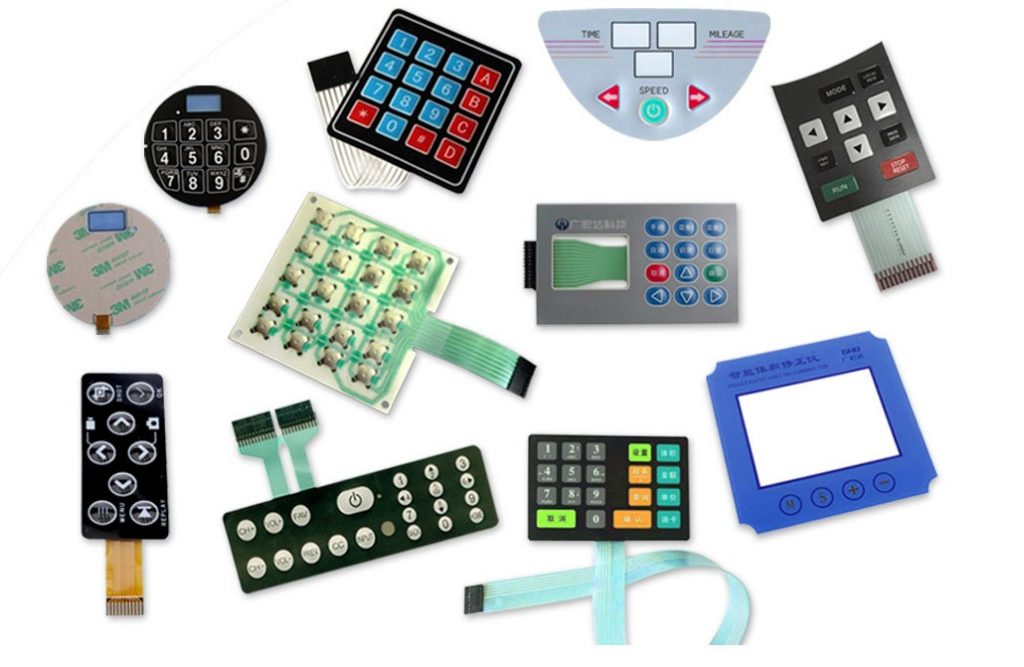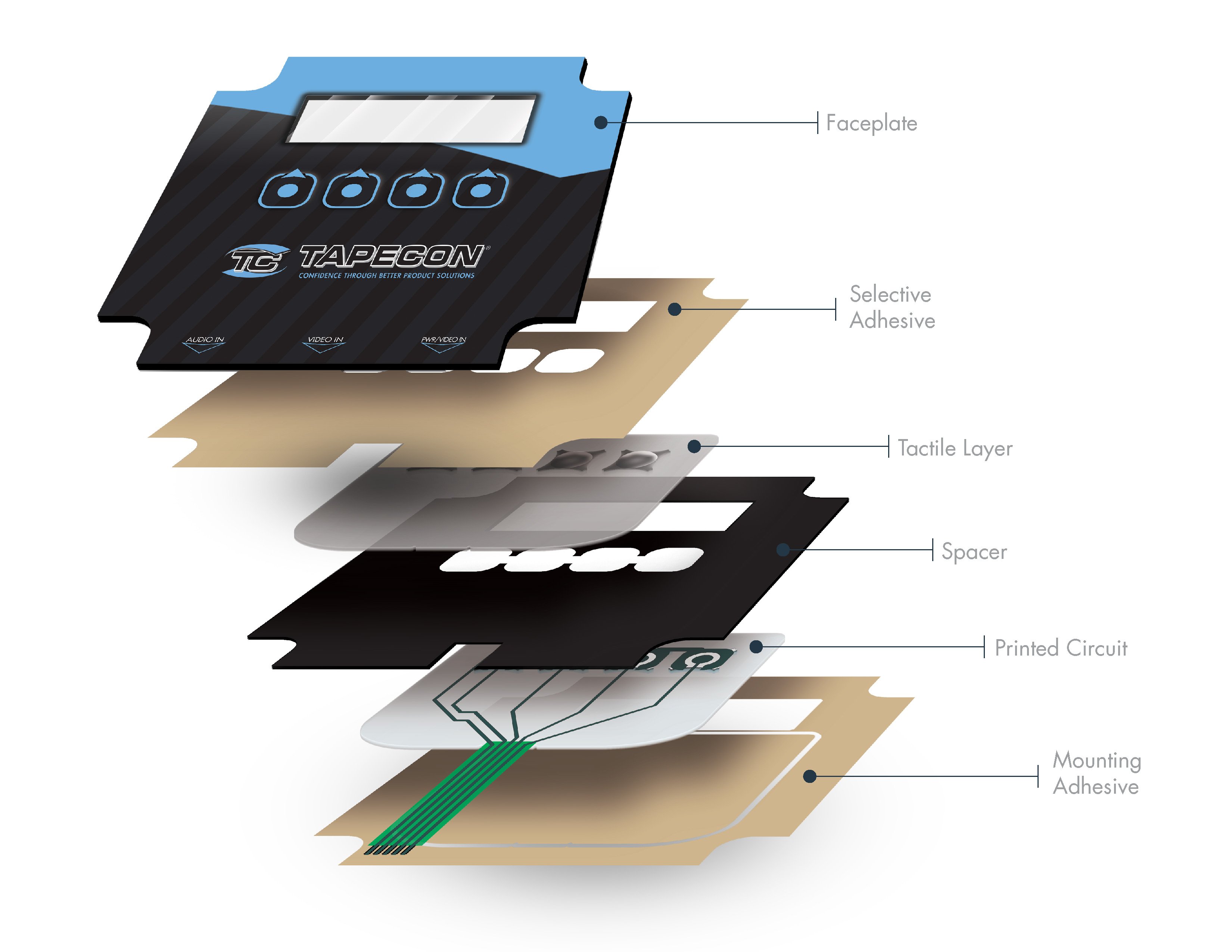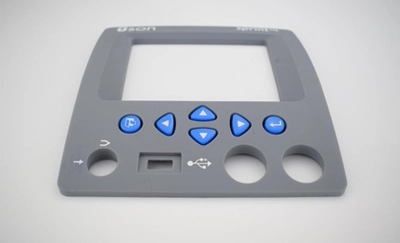The Production Process Behind Membrane Layer Change: What You Need to Know
The production process behind membrane layer changes combines careful style, material option, and top quality control. It begins with recognizing the details of membrane button style and proceeds with numerous stages, consisting of material options and printing strategies. Each phase plays an essential function in ensuring performance and durability. The intricacies of layer building and the strenuous screening standards may disclose understandings that are not instantly noticeable. What lies beyond these foundational components?
Recognizing Membrane Switch Style
Membrane layer buttons might show up straightforward at initial glance, their design includes elaborate factors to consider that assure capability and resilience. The design process starts with a complete understanding of customer needs, consisting of the user interface's desired application and ecological factors. Ergonomics is a crucial element, as the layout should help with ease of use while ensuring that tactile feedback meets individual expectations.Moreover, the layering of parts, such as visuals overlays, glue layers, and conductive traces, should be specifically crafted. membrane switch. This split configuration not only affects the switch's responsiveness but also affects its durability. Attention is offered to the securing strategies utilized to safeguard against dampness and dirt, which might jeopardize performance. Additionally, layout factors to consider prolong to aesthetic appeals, where color pattern and visual quality improve user experience. Ultimately, the layout of membrane switches over balances functionality, customer experience, and toughness, guaranteeing that they meet the needs of various applications effectively
Products Used in Membrane Layer Change Production
When choosing materials for membrane layer button manufacturing, it is essential to ponder both efficiency and toughness. The key materials consist of polyester and polycarbonate films, which offer versatility and toughness. These films are often covered with glue to ensure correct bonding to substrates. Conductive inks, commonly made up of silver or carbon, are critical for producing electric connections within the switch, permitting reputable operation.Additionally, a safety layer, such as a hard layer, is frequently related to boost scratch resistance and longevity. The option of backing product, such as acrylic or foam, can considerably affect the switch's tactile feeling and total user experience. Various environmental aspects, consisting of temperature level and moisture, should direct product choice to assure peak performance in particular applications. Eventually, the ideal mix of products adds to the membrane button's capability and life-span, making informed choices important for makers.
The Printing Refine: Creating Video and Text
The printing process in membrane layer button production plays a substantial duty in generating high-quality graphics and text. Various visuals design techniques are employed to guarantee aesthetic allure and capability, while mindful ink choice techniques are crucial for resilience and performance. Understanding these components is basic for accomplishing finest cause membrane switch design.
Graphic Style Techniques
Graphic style techniques play a crucial function in the printing process of membrane layer buttons, as they define how graphics and message will ultimately show up on the end product. Efficient graphic design involves the calculated use colors, designs, and font styles to improve readability and aesthetic allure. Designers frequently utilize vector graphics for scalability, guaranteeing that images stay sharp at different dimensions. Furthermore, focus to comparison and alignment is vital, as it affects user communication and visual high quality. The incorporation of branding aspects, such as logo designs, must be managed with like maintain brand name honesty. Overall, thoughtful graphic layout techniques contribute significantly to the capability and attractiveness of membrane buttons, affecting individual experience and product performance.
Ink Choice Approaches
Selecting the proper ink is crucial for accomplishing the wanted aesthetic quality and sturdiness in membrane layer button manufacturing. Numerous ink types are used, consisting of solvent-based, water-based, and UV-curable inks. Each kind supplies distinct qualities, such as versatility, resistance, and bond to environmental elements. Solvent-based inks are commonly preferred for their durability and dynamic colors, while water-based inks are more environmentally friendly but might have constraints in attachment. UV-curable inks give rapid healing and durable efficiency. Furthermore, color matching techniques assure that the picked inks line up with design specifications. Inevitably, the selection of ink need to think about elements such as application method, substratum compatibility, and end-use needs to accomplish remarkable cause membrane switch graphics and message.
Layer Building and Assembly

Material Selection Process
A careful selection of materials is necessary in the production process of membrane switches, as it directly influences functionality and sturdiness. The main materials made use of consist of polyester, polycarbonate, and numerous conductive inks. Polyester is commonly preferred for its superb resistance to chemicals and abrasion, making it ideal for rough settings. Polycarbonate, on the various other hand, supplies remarkable clearness and influence resistance, which is Click This Link beneficial for applications requiring visibility and robustness. Conductive inks, typically made up of silver or carbon, are essential for developing trustworthy electric pathways. Additionally, the selection of glue products affects the overall integrity of the button - membrane switch. Examining elements such as environmental direct exposure, responsive responses, and aesthetic requirements overviews makers in choosing the most effective products for their certain applications
Layer Adhesion Strategies
Sticking layers in membrane switch building and construction is a crucial process that assures performance and longevity. Numerous adhesion strategies are utilized to secure perfect bonding in between layers, which typically include making use of adhesives, warmth, and pressure. Pressure-sensitive adhesives (PSAs) are commonly made use of for their simplicity of application and prompt bonding capacities. Furthermore, thermal bonding strategies can be applied, where warmth is utilized to turn on sticky residential or commercial properties, securing a strong bond. The selection of attachment technique largely relies on the materials included and the specific application requirements of the membrane layer switch. Appropriate alignment and uniform application of adhesives are important to stop defects, protecting the button runs successfully throughout its intended life expectancy.
Top Quality Control Measures
Ensuring quality assurance during the layer building and setting up of membrane layer switches is essential for keeping performance and dependability. This procedure commonly involves a number of important actions, including extensive assessments at each phase of production. Producers use innovative screening approaches, such as peel examinations and adhesion assessments, to verify the integrity of layer bonds. Additionally, visual assessments are performed to recognize any kind of issues in printing or Homepage product inconsistencies. Ecological problems, such as temperature level and moisture, are thoroughly monitored to ensure suitable treating and bond. Additionally, routine calibration of devices assists maintain accurate production criteria. By applying these quality assurance procedures, suppliers can substantially minimize the danger of product failing, ensuring that the final membrane switches over satisfy the needed specifications and customer expectations.
Examining and Quality Assurance Steps

Advancements in Membrane Layer Switch Technology
As advancements in technology continue to advance, membrane switches are gaining from ingenious developments that boost their performance and customer experience. One significant development is the assimilation of capacitive touch innovation, which permits even more intuitive and receptive user interfaces. This change not only improves visual appeals yet likewise reduces mechanical deterioration, extending the lifespan of the switches.Additionally, improvements in graphic overlay products have actually resulted in boosted sturdiness and resistance to ecological elements such as wetness and UV light. These products now use enhanced quality and brightness, additional boosting the visual appeal.Furthermore, the consolidation of clever technology is transforming membrane layer switches over into interactive control panels, making it possible for connectivity with IoT gadgets. This connection fosters a seamless individual experience, leading the way for applications in various markets, from medical care to customer electronic devices. Collectively, these developments placement membrane changes as important parts in modern device design.
Often Asked Concerns
The length of time Does the Membrane Layer Switch Over Production Process Take?
The duration of the membrane switch manufacturing process can vary significantly. Aspects such as intricacy, products utilized, and manufacturing volume influence timelines, with common production ranging from a few days to several weeks for completion.
What Are the Common Applications for Membrane Switches?
Membrane layer buttons are generally made use of in numerous markets, including auto controls, house devices, clinical gadgets, and consumer electronics (membrane switch). Their flexibility and sturdiness make them optimal for applications needing user-friendly user interfaces and trustworthy efficiency in diverse environments
Can Membrane Layer Switches Over Be Personalized for Particular Needs?

What Is the Lifespan of a Common Membrane Layer Switch Over?
The life-span of a typical membrane switch varies, but normally, it varies from 1 to 5 million cycles. Variables such as use, setting, and worldly top quality greatly influence resilience and general performance in time.

Are Membrane Layer Changes Environmentally Pleasant?
The environmental kindness of membrane switches over differs. Some materials made use of may not be recyclable, while others can be environment-friendly. The general impact depends on making materials and practices, demanding cautious consideration throughout option and disposal. The manufacturing procedure behind membrane layer switches combines careful style, material option, and high quality control. It begins with understanding the intricacies of membrane layer switch layout and advances through numerous stages, consisting of material selections and printing methods. When selecting products for membrane switch manufacturing, it is essential to ponder both performance and durability. A cautious selection of products is essential in here are the findings the production process of membrane layer switches, as it directly affects performance and longevity. The option of adhesion technique largely depends on the materials entailed and the particular application needs of the membrane switch.
Comments on “The rise of membrane switch in aerospace technology”